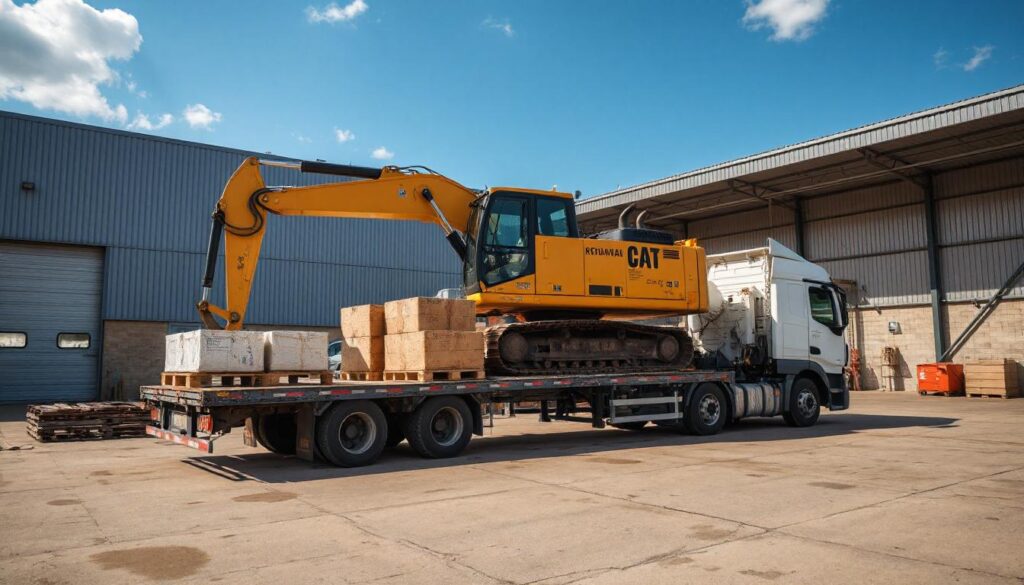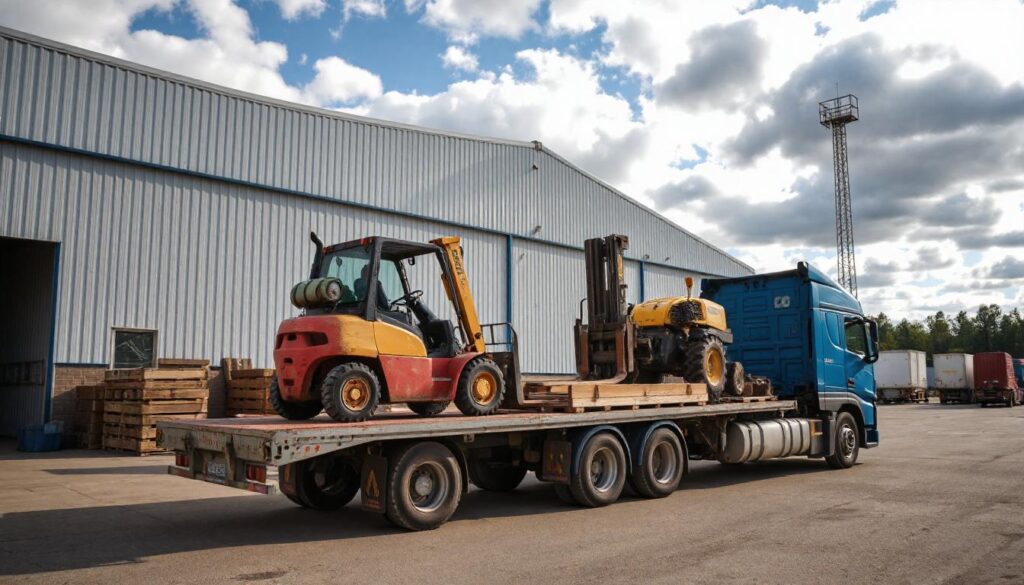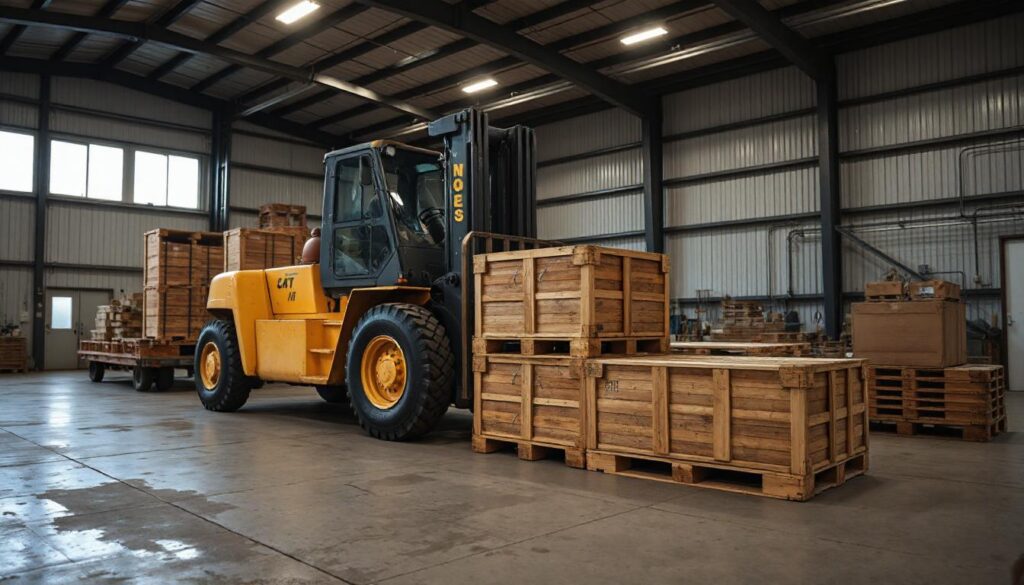Industrial Crating: The Secret to Safe Heavy Equipment Transport
Moving heavy equipment in industry is no joke. It requires planning, specialized wrapping and knowing the specific needs of big and often fragile machinery. Industrial crating is a big part of that process, to ensure equipment is wrapped for safe transport, whether locally or internationally. In this article we’ll look at why industrial crating, best practices and how to use heavy equipment crating and shipping services for a successful transport.
What is Industrial Crating?
Industrial crating is the process of creating custom crates to protect heavy and valuable equipment during transport. Unlike regular packaging, industrial crates are made to the exact dimensions, weight and fragility of machinery or parts. These crates provide a rigid structure that prevents movement, absorbs impact and shields equipment from environmental elements like moisture, dust and extreme temperatures.
Why is Industrial Crating Important?
In industry, machinery is a big investment. Without proper crating, even minor transportation mishandling can mean costly damage or delay. Industrial crating ensures equipment arrives at destination ready to be installed or used straight away.
Heavy Equipment Crating and Shipping Services
Heavy equipment crating and shipping services are used in industries like manufacturing, construction and oil and gas where moving big machinery is a common occurrence. These services offer a full range of solutions from designing custom crates to handling the logistics of transport.

Industrial crating
Features of Crating and Shipping Services:
- Custom Crates: Every piece of heavy equipment has its own specifications and industrial crating companies design crates to meet the specific needs of each piece of equipment.
- Loading and Unloading Expertise: Moving heavy equipment requires specialized knowledge to prevent damage during handling. Heavy equipment crating and shipping services have trained professionals who know how to load and unload equipment safely.
- Compliance with Shipping Regulations: Whether shipping locally or internationally, compliance with shipping regulations is crucial. Crating and shipping services ensure equipment meets industry standards and government regulations, no delays at customs or checkpoints.
Industrial Crating Best Practices
To ensure a successful transport, there are best practices to follow in industrial crating. These best practices minimize the risks of transport and ensure equipment is well wrapped during the journey.
a. Customized Crating
One of the most important part of industrial crating is customization. Every piece of machinery is different in size, weight and fragility so off the shelf crates won’t cut it.
b. Quality Materials
The materials used in industrial crating are important. Most crates are made of hardwood but in some cases metal or plastic may be used depending on the equipment’s requirements.
c. Proper Weight Distribution
When shipping heavy equipment, proper weight distribution within the crate is critical. Uneven weight can cause instability during transport and increase the risk of damage. Crates should be designed to distribute the load evenly to prevent accidents during handling.
d. Labeling and Documentation
Clear labeling of industrial crates ensure handling crews know how to handle and transport the equipment properly. This includes information about fragile parts, weight limits and instructions for opening or disassembling the crate upon arrival. And shipping documentation must be accurate and complete to comply with regulations.
Who to Choose for Heavy Equipment Crating and Shipping
When shipping heavy equipment, choosing the right heavy equipment crating and shipping services provider can make all the difference. These companies package and ship big, sensitive or complex equipment safely and efficiently. Here’s what to look for:
a. Experience and Knowledge

Industrial Crating Best Practices
Look for a provider with experience in handling heavy machinery. They should know the ropes of industrial crating and have a portfolio in the industry.
b. Custom Solutions
Every piece of heavy equipment is unique and one size fits all won’t cut it. The best providers offer bespoke solutions from custom crate design to logistics planning. Make sure they can accommodate your equipment’s specific requirements including disassembly or reassembly if needed.
c. Services
A full service provider should offer more than just crating. They should handle all aspects of transport, loading, unloading and delivering the equipment to its final destination. Some providers also offer storage solutions if there are delays in transport.

Who to Choose for Heavy Equipment Crating and Shipping
Industrial Crating Future: Technology Innovations
As industries advance, so do the technologies and practices associated with industrial crating. Moreover, many providers are now adopting innovative solutions that enhance both safety and efficiency in crating and shipping processes. For instance, some companies have begun using 3D modeling software to design crates with precise measurements, ensuring an ideal fit for equipment.
a. 3D Crate Design
3D modeling technology enables the creation of custom crates with exact dimensions tailored to the equipment. Consequently, this approach minimizes the risk of dimensional errors and ensures maximum protection during transport by providing a perfect fit for the equipment.
b. Smart Crates
Innovation has also brought the integration of technology into crating. In particular, smart crates equipped with sensors can monitor environmental conditions such as temperature and humidity throughout the shipping process. Furthermore, this is especially critical when transporting sensitive equipment that could be adversely affected by fluctuating conditions.
By embracing these advancements, industrial crating providers are paving the way for safer and more efficient shipping solutions.

Who to Choose for Heavy Equipment Crating and Shipping
Conclusion: Industrial Crating for Heavy Equipment Shipping
Industrial crating is a crucial part of heavy equipment transport, as it provides the necessary protection for valuable machinery during its journey. Moreover, by following best practices, using high-quality materials, and partnering with heavy equipment crating and shipping services, you can ensure your equipment arrives safely and in one piece.
In addition, whether you’re shipping construction equipment, manufacturing machinery, or delicate industrial components, investing in proper crating and shipping services is key to minimizing risk and maximizing efficiency. Ultimately, as technology advances, the future of industrial crating will see even more innovations that make the shipping process safer and more efficient.

